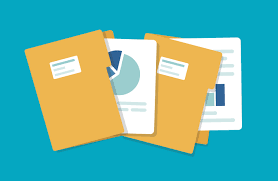 Organizing your digital files properly is essential to stay productive and efficient. By following the following tips you’ll be able to increase your productivity and save valuable time.
Organizing your digital files properly is essential to stay productive and efficient. By following the following tips you’ll be able to increase your productivity and save valuable time.
1. Create a naming standard for file names
Creating a naming standard for file names helps employees reduce the time spent searching for files. A study by Deloitte found that inconsistent naming conventions and lack of metadata can lead to a 25% reduction in productivity. A consistent file naming convention also helps to avoid duplicates and outdated versions of files, which can save time and improve collaboration among team members.
2. Create a strategic file hierarchy
Based on a McKinsey study, the average worker spends about two hours each day searching for data wasting 9.3 hours per week. To optimize productivity and minimize time wastage, it’s essential to establish a well-organized file structure that enables employees to access information quickly and efficiently.
3. Use file tagging
File tagging allows users to add descriptive keywords to files, making them easier to search and filter. With file tagging, users can easily group and categorize files by topics, projects, or any other relevant criteria. File tagging can help with collaboration, as team members can easily share and access files based on the assigned tags.
4. Archive Old Files
Archiving old files improves productivity by freeing up storage space and reducing clutter. It can lead to faster search times and easier access to the needed files. It can also help with security by reducing the files requiring protection and monitoring. Archiving old files can be a cost-effective solution to this problem, as it allows organizations to retain important data while freeing up storage space for new information.
For more information on solutions for running your businesses’ technology more efficiently, visit our website or contact Megan Meisner at mmeisner@launchpadonline.com or 813 448-7100 x210.




